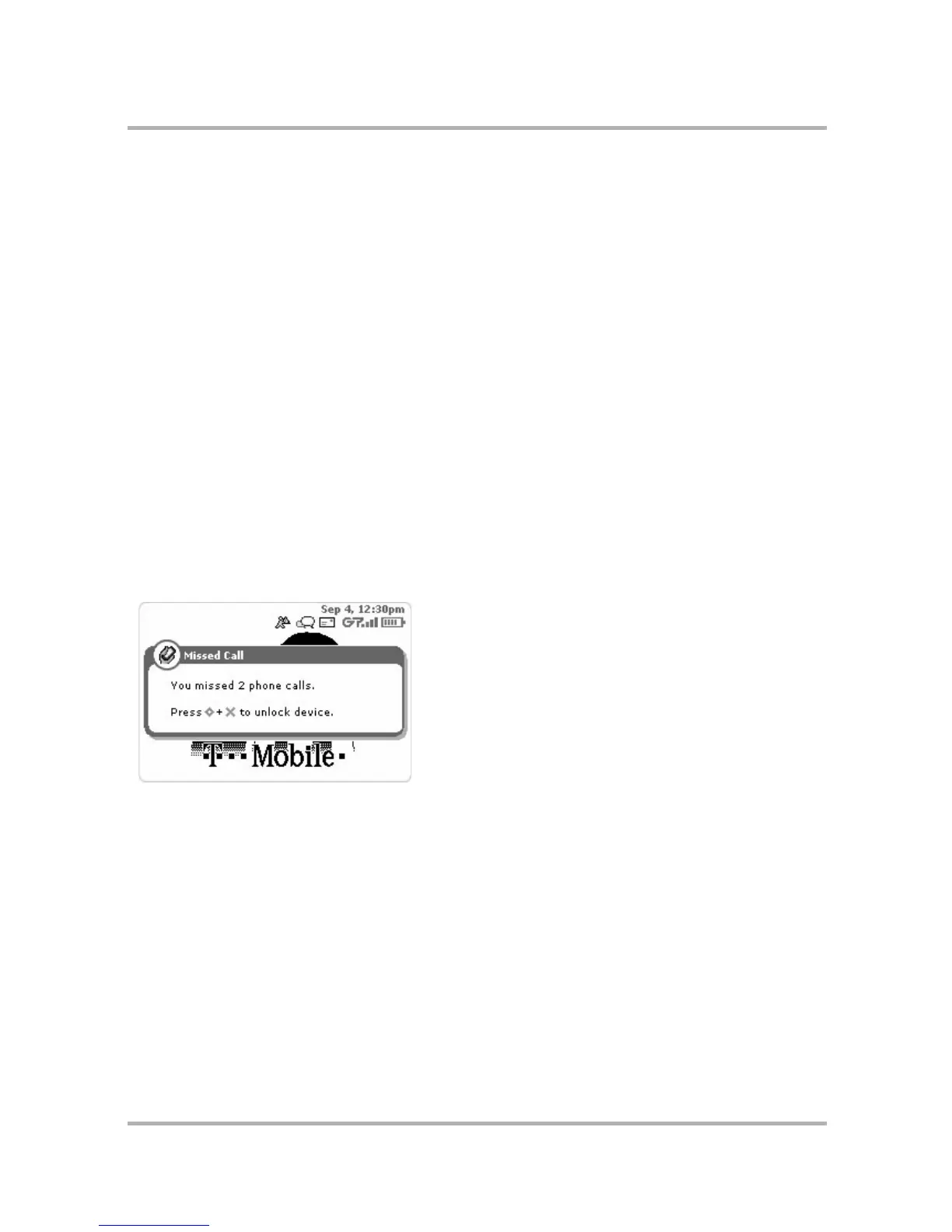Frequently Asked Questions
July 29, 2002 T-Mobile Sidekick Owner’s Manual 223
Why do I get a “Service unavailable” notification when I’m in Address Book or Calendar? I
didn’t ask to use the service.
Although you didn’t explicitly ask to use the service (like by sending an email, going to a Web page, or sending
an instant message), the device and the Desktop Interface are always communicating via the service to
synchronize your data. Also, the “Service unavailable” notification (and other “system” notifications) keep you
informed of the connection status of the device.
If my device is in key guard and power-saving mode, will it stay connected and let me know if
I have a phone call or new message?
Yes! If you have an incoming phone call while in either key guard or power-saving mode, you’ll receive the
Phone Call dialog box. From this dialog box you can select Answer Phone or Forward to Voice Mail. (If you do
nothing, the call will eventually go to voice mail and you’ll see the Missed Call dialog box.)
If you receive a new email, IM, or SMS message while in key guard or power-saving mode, you’ll receive a
“balloon” notification (just once) and the little communication services notification icon will appear in the title
bar, until you leave key guard mode and read the message. You’ll also hear all the new message ringtones you’ve
set (unless you’ve set the device to mute). Note that if your device is in power-saving mode when a new
message arrives, the screen will temporarily “un-blank” to allow you to read the balloon notification and see the
icon.
In the example below, the device is still in key guard. The screen tells the user that, since going into key guard,
two phone calls were missed (user ignored the Phone Call dialogs), there’s a new instant message, new email,
and a new phone message, all waiting to be read:
When I’m on the phone, the “G” in the title bar disappears. When I hang up it comes back.
Why?
When you place a phone call or send a phone message (SMS), your device uses a different type of network
connection than when you send emails, browse the Web, or send an instant message. Both networks use the
same basic infrastructure (transceivers, base station controllers, radio frequencies, etc.), but the way data is
transmitted differs:
• Phone calls and phone messages use the GSM network, a circuit-switched system that is limited to 14.4
kbps (kilobytes per second), and monopolizes an entire data channel.
• Web browsing, email and instant messaging use the GPRS network, a packet-switched system that can
transmit up to 53.6 kbps, and shares channels.
